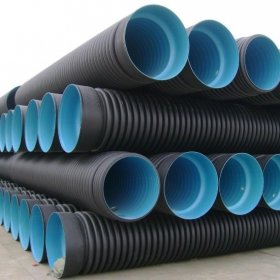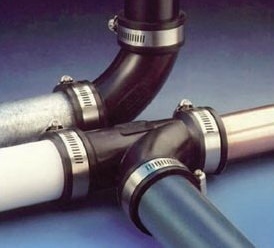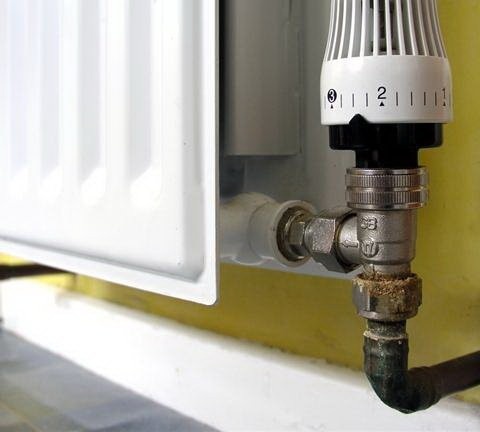5 serious disadvantages of plastic pipes for water and heating

Plastic pipes are widely used in construction for the installation of plumbing and heating systems. This is due, first of all, to their low price compared to metal counterparts. However, this type of pipe has a number of disadvantages, and before deciding on their use, each potential user must carefully weigh the pros and cons.
Strong thermal expansion
Compared to metal, plastic pipes have a significantly higher coefficient of linear thermal expansion. For example, for polypropylene this figure is 2.5 mm per linear meter, while for metal it is 5 times less. This effect usually does not affect the system’s performance, but the appearance spoils significantly. Under the influence of high temperatures, plastic pipes will go in waves and even the frequent location of fasteners will not save the situation. This fact (along with the high sensitivity of plastic to solar ultraviolet rays), firstly, makes it difficult to place them in a cement screed, and secondly, it generally leads to the need for hidden installation of plastic water supply and heating systems. And the secrecy of the installation seriously increases the significance of the next drawback.
The need for a large number of connections
Since pipes are produced in pieces of a certain length (2-4 meters), to create a complete system they will often have to be connected. The number of joints increases sharply due to corners and turns, since such pipes cannot be bent, that is, in a house with an area of about 100 square meters there can be several hundred pipe joints. It is also important that the plastic pipes are connected by a joint. The process is manual, requiring great skill and accuracy. Externally, the seam may look completely normal, but during operation, let it leak. High-quality adhesion is sometimes difficult to perform due to the inaccessibility of the seam. A large coefficient of thermal expansion can also affect the tightness of the connection. True, this reason for the appearance of a leak is extremely rare.
Now recall that our installation is hidden, and if the system leaks, it will take a lot of effort to determine the exact location of the leak. Well, of course, you can not do without opening walls or floors.
Narrowing the internal diameter during installation
Poor or improper adhesion can lead to narrowing of the inner diameter of the plastic pipes, which creates additional resistance and impedes the normal operation of the system. This is especially noticeable if there are several such “jambs”. The problem is also that it is impossible to find out about their existence until the pipe is cut.
Low strength reinforcing material
The need for reinforcing plastic pipes is associated with several factors. The main one is the inability of plastic to prevent the penetration of oxygen.And that, in turn, leads to corrosion of radiators and metal components, a change in the chemical composition of the coolant, and can also cause the growth of aerobic bacteria, the colonies of which can narrow the lumen of the system. Reinforcement also significantly reduces the coefficient of linear thermal expansion.
There are two ways to reinforce: aluminum foil and fiberglass. Aluminum reinforcement is external and internal. When soldering pipes, they need to be cleaned with a shaver. In the case of internal reinforcement, the pipe becomes thin, and the weld may be of poor quality. Therefore, it is preferable to use pipes with the closest possible arrangement of the foil to the surface. However, since fiberglass pipes are much cheaper, many manufacturers produce them. Such pipes are highly brittle (sometimes it is enough to drop the pipe to the floor to break the reinforcement). Fiberglass at low temperatures becomes brittle and breaks. Therefore, work with such pipes in frosty conditions is prohibited.
Even knowing about these shortcomings, you may encounter substandard material. Indeed, pipes are often stored in unheated warehouses, where no one monitors compliance with the necessary microclimate. In addition, you do not know what happened to them during transportation from the factory to the store, and you can not control it.
Possibility of leakage of fittings
Many shaped products not only consist of plastic, but also include metal parts. Due to the mentioned difference in the linear thermal expansion coefficients of metal and plastic, these products can leak at the junction of materials. True, if you use the products of well-known companies (for example, Kalde or Valtec), then the probability of encountering a defective part approaches zero. For reliability, of course, you have to pay more, but do not forget about the hidden installation.
Speaking of shaped products, one cannot fail to mention one more drawback inherent in them - their thickness is greater than the thickness of the pipes themselves. In some cases, this creates serious obstacles during installation (especially in cement screeds). In conclusion, we mention that the service life of systems made of plastic pipes, as a rule, does not exceed 20-25 years, despite the promise of manufacturers twice as long. Such a long service life is possible only with an ideal starting material and an ideal installation.
Summarizing the above, we can conclude that, in general, systems of plastic pipes are viable and relatively inexpensive. However, nevertheless they are better used for plumbing rather than heating systems, since in this case the operating conditions are more gentle. Although there are no direct prohibitions.


